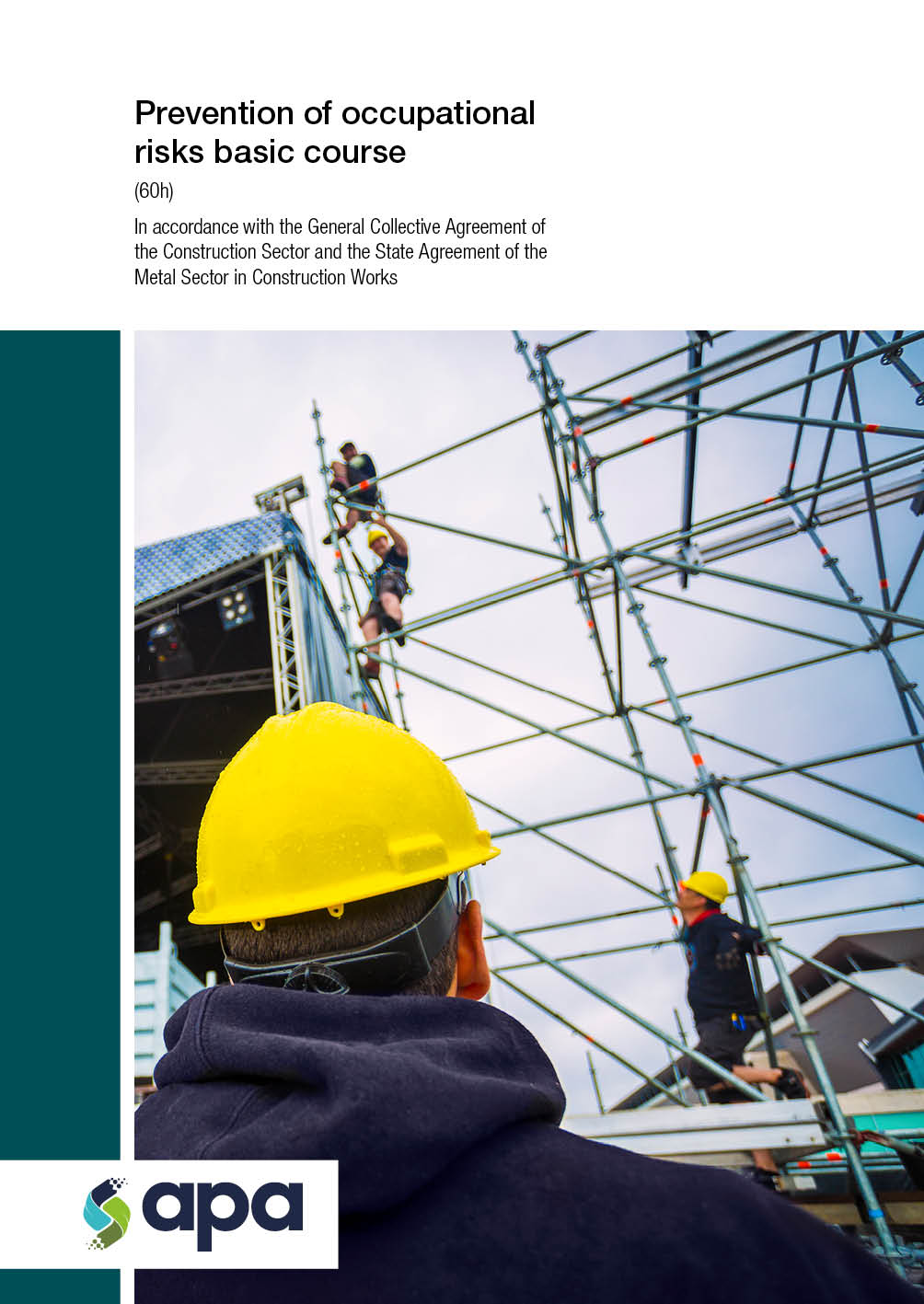Module 1. Basic concepts on safety and health at work
1.1. Work and health: occupational risks. Risk Factors
1.2. Occupational injuries
1.2.1. Work accidents
1.2.2. Occupational diseases
1.2.3. Other health damages
1.3. Basic regulatory framework for the prevention of risks at work
1.4. Basic rights and duties
1.5. Consequences of non-compliance in preventive matters
Self-evaluation questionnaire. Module 1
Module 2. General risks and their prevention
2.1. Risks linked to safety conditions
2.1.1. Identification and preventive measures
2.2. General considerations on the conditions to be met by workplaces and equipments
2.2.1. Tidiness and cleanliness of workplaces
2.2.2. Workplace Safety Signs
2.2.3. Miscellaneous signage
2.2.4. Installations
2.3. Risks associated with working environment
2.4. Physical contaminants
2.4.1. Noise
2.4.2. Vibrations
2.4.3. Thermal environment
2.4.4. Electromagnetic energy: ionising and non-ionising radiation
2.5. Chemical pollutants
2.5.1. Effects of chemical pollutants
2.5.2. Exposure assessment for chemical agents
2.6. Biological pollutants
2.6.1. Biological risk assessment and preventive measures
2.7. Lighting of work places
2.8. Workload, fatigue and dissatisfaction associated with work
2.8.1. Physical load
2.8.2. Mental workload
2.8.3. Tiredness
2.8.4. Job dissatisfaction
2.9. Elementary risk control systems. Collective and individual protection
2.9.1. Safety Inspections
2.9.2. Accident Investigation
2.9.3. Working rules and procedures
2.9.4. Collective protections
2.9.5. Personal protective equipment
2.9.6. Classification of personal protective equipment
2.10. Emergency and evacuation plans
2.10.1. Types of major accidents
2.10.2. Fire risk
2.10.3. Actuation in case of fire
2.10.4. Classification of emergency situations
2.10.5. Emergency planning
2.10.6. Actions in an emergency plan
2.10.7. Emergency response support information
2.10.8. Drills
2.11. Monitoring workers’ health
2.11.1. Workers’ rights
2.11.2. Obligations once the employment relationship has ended
2.11.3. Health assessment
Self-evaluation questionnaire. Module 2
Module 3. Specific risks and their prevention
3.1. Different phases of work and their corresponding protections
3.1.1. Road works
3.1.2. Demolitions
3.1.3. Earthworks
3.1.4. Shoring systems
3.1.5. Execution of structures
3.1.6. Execution of enclosures
3.1.7. Execution of roofs
3.1.8. Execution of finishes
3.1.9. Execution of installations
3.2. Work-site set-up. Welfare facilities, temporary installations
3.2.1. Access and fencing
3.2.2. Changing rooms, toilets and dining rooms
3.2.3. First aid
3.2.4. Temporary electrical installation
3.3. Auxiliary equipment
3.3.1. Scaffolding
3.3.2. Ladders
3.3.3. Loading and unloading platforms
3.3.4. Props
3.3.5. Footbridges
3.3.6. Mobile lifting platforms for staff
Self-evaluation questionnaire. Module 3
Module 4. Basic elements of risk prevention
4.1. Public bodies concerned with occupational safety and health
4.1.1. International institutions and organisations
4.1.2. National agencies
4.1.3. Bodies of the Autonomous Communities
4.1.4. Mutual Organisations with Social Security
4.2. Preventive work organisation: basic routines
4.2.1. Prevention management in the company
4.2.2. Prevention organisation
4.2.3. Legal audit
4.2.4. Prevention plan
4.2.5. Risk assessment
4.2.6. Business activity co-ordination
4.2.7. Preventive Resource
4.3. Documentation: gathering, processing and archiving
4.4. Workers’ representation: rights and obligations
4.4.1. Prevention delegate
4.4.2. Health and Safety Committee
Self-evaluation questionnaire. Module 4
Module 5. First aid
5.1. General action
5.2. Life chain
5.3. Basic life support (BLS
5.3.1. Automated external defibrillator
5.4. Wounds
5.5. Bleeding
5.5.1. Tourniquet
5.6. Fractures
5.7. Burns
5.8. Frostbite
5.9. Unconscious states
5.10. Poisoning
5.11. Foreign bodies
5.12. Electrical shocks and electrocutions
Self-evaluationSelf-evaluation questionnaire. Module 5
CHECKLISTS
ASSESSMENT TEST





Valoraciones
No hay valoraciones aún.